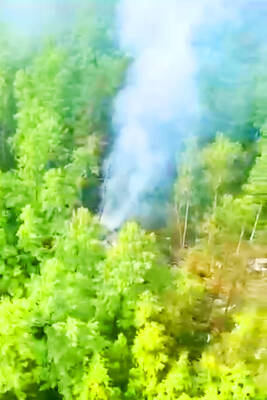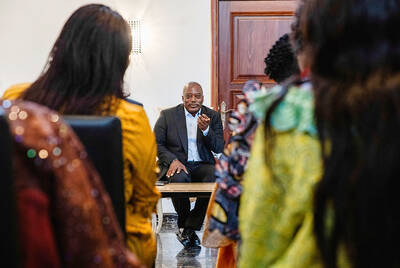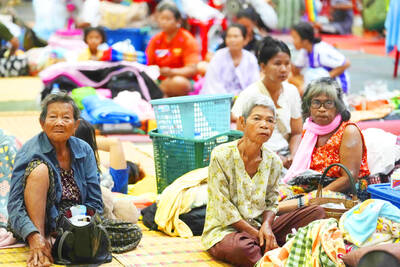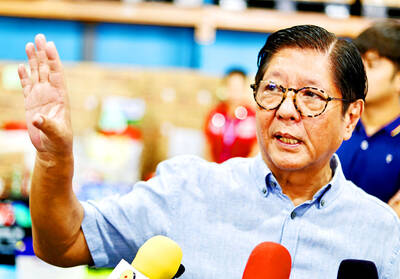Zimbabwe’s gold mines are dusting themselves off after the unity government deregulated the industry, ending a two-decade state monopoly on buying the precious metal after years of plunging production.
Gold remains one of Zimbabwe’s top exports, but output has tumbled as miners complained that the Reserve Bank — the only authorized buyer for 21 years — offered unfair prices and then delayed payments or failed to pay.
Mining operations have also been hamstrung over the last decade by nationwide power cuts and severe shortages of foreign currency, needed to buy and maintain equipment.
That’s been slowly changing since the unity government between long-ruling Zimbabwean President Robert Mugabe and his one-time rival, Zimbabwean Prime Minister Morgan Tsvangirai, deregulated the industry in March.
Now miners are allowed to market their gold freely and to retain all their earnings, whereas previously the Reserve Bank pocketed a percentage.
“During the first three months of the year nothing was happening in the gold mining industry, but there is renewed confidence and optimism in the gold mining sector since the deregulation,” Chamber of Mines chief executive officer Joseph Malaba said.
“There is increased output when compared to the start of the year when there was nothing,” he said.
No gold was lodged for sale in the first quarter of the year, but in April and last month miners brought in 600kg, the chamber said.
Last year the country produced only 3,576kg of gold — compared with a peak of 27,108kg in 1999.
Some miners are selling their gold through the chamber. Other firms are exporting directly to South Africa, and local banks have also indicated their interest in becoming gold buyers.
Blanket Mine, which shut down last year, resumed operations in April and expects to produce 680kg by September this year.
The mine, owned by Canada’s Caledonia Mining, has so far sold 21.7kg of gold to Rand Refineries in South Africa.
The president and chief executive officer of Caledonia, Stefan Hayden, said he hoped there would not be a policy shift by the government.
“Provided a stable operating and monetary environment is maintained in Zimbabwe, it is hoped that commercial lending activities can resume which will allow Blanket to realize its next operating goal of becoming a 40,000 ounce [1,134kg] per annum gold producer in 2010,” he said.
Turk mine, owned by Canada’s New Dawn Mining, has returned to full operations and plans to produce at least 32.6kg of gold by October.
The uptick gives a glimmer of hope in a country desperately searching for signs of a turnaround in a once-vibrant economy that collapsed over the last decade under world-record hyperinflation that impoverished the country.
Since joining the unity government, Tsvangirai has pledged to rebuild the economy in a nation where unemployment is at 94 percent and half the population depends on international food aid.
He will ne embarking on a foreign tour this week to convince Western donors to open their pocketbooks despite their reservations about Mugabe.
Zimbabwe says it needs US$8.5 billion over three years to revive the economy and the civil service, including schools and hospitals, but has yet to win major direct aid to the government.
Reviving key industries like gold mining would help Zimbabwe earn more revenue itself, if it can keep policy on a steady course.
“We are now operating in vastly changed conditions,” said John Nixon, deputy chairman of Rio Zim, one of the country’s biggest producers.

FOREST SITE: A rescue helicopter spotted the burning fuselage of the plane in a forested area, with rescue personnel saying they saw no evidence of survivors A passenger plane carrying nearly 50 people crashed yesterday in a remote spot in Russia’s far eastern region of Amur, with no immediate signs of survivors, authorities said. The aircraft, a twin-propeller Antonov-24 operated by Angara Airlines, was headed to the town of Tynda from the city of Blagoveshchensk when it disappeared from radar at about 1pm. A rescue helicopter later spotted the burning fuselage of the plane on a forested mountain slope about 16km from Tynda. Videos published by Russian investigators showed what appeared to be columns of smoke billowing from the wreckage of the plane in a dense, forested area. Rescuers in

‘ARBITRARY’ CASE: Former DR Congo president Joseph Kabila has maintained his innocence and called the country’s courts an instrument of oppression Former Democratic Republic of the Congo (DR Congo) president Joseph Kabila went on trial in absentia on Friday on charges including treason over alleged support for Rwanda-backed militants, an AFP reporter at the court said. Kabila, who has lived outside the DR Congo for two years, stands accused at a military court of plotting to overthrow the government of Congolese President Felix Tshisekedi — a charge that could yield a death sentence. He also faces charges including homicide, torture and rape linked to the anti-government force M23, the charge sheet said. Other charges include “taking part in an insurrection movement,” “crime against the

POINTING FINGERS: The two countries have accused each other of firing first, with Bangkok accusing Phnom Penh of targeting civilian infrastructure, including a hospital Thai acting Prime Minister Phumtham Wechayachai yesterday warned that cross-border clashes with Cambodia that have uprooted more than 130,000 people “could develop into war,” as the countries traded deadly strikes for a second day. A long-running border dispute erupted into intense fighting with jets, artillery, tanks and ground troops on Thursday, and the UN Security Council was set to hold an emergency meeting on the crisis yesterday. A steady thump of artillery strikes could be heard from the Cambodian side of the border, where the province of Oddar Meanchey reported that one civilian — a 70-year-old man — had been killed and

Philippine President Ferdinand Marcos Jr is to meet US President Donald Trump this week, hoping Manila’s status as a key Asian ally would secure a more favorable trade deal before the deadline on Friday next week. Marcos would be the first Southeast Asian leader to meet Trump in his second term. Trump has already struck trade deals with two of Manila’s regional partners, Vietnam and Indonesia, driving tough bargains in trade talks even with close allies that Washington needs to keep onside in its strategic rivalry with China. “I expect our discussions to focus on security and defense, of course, but also